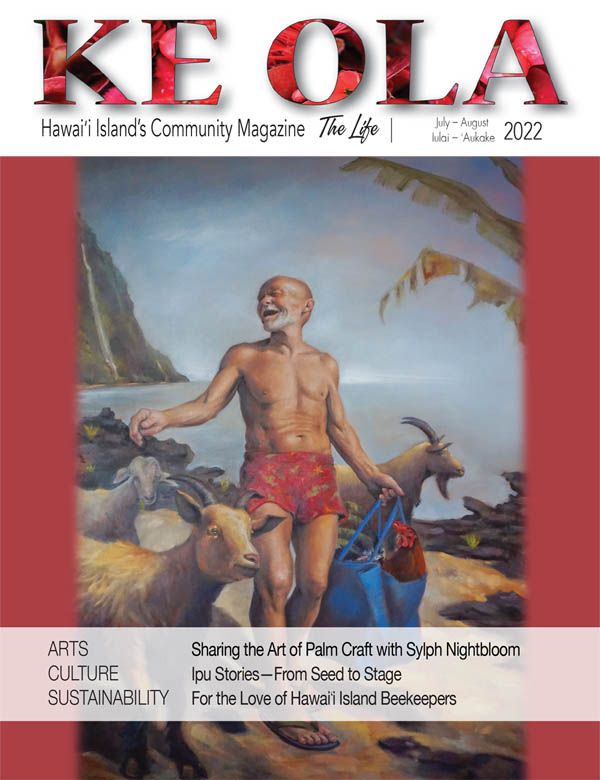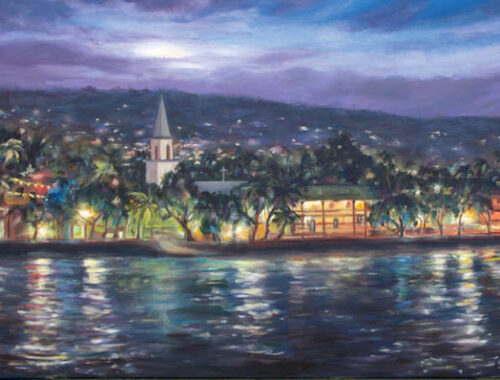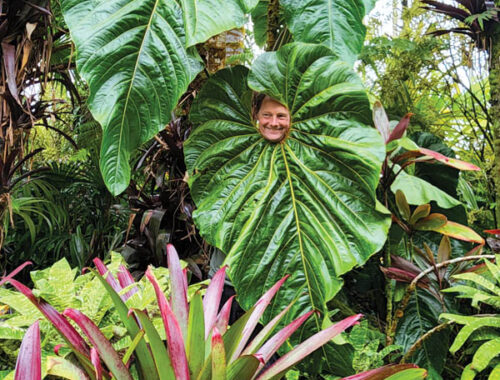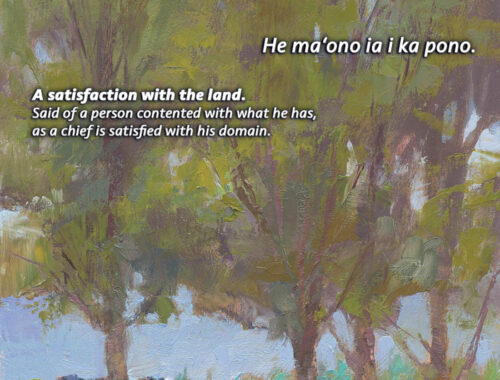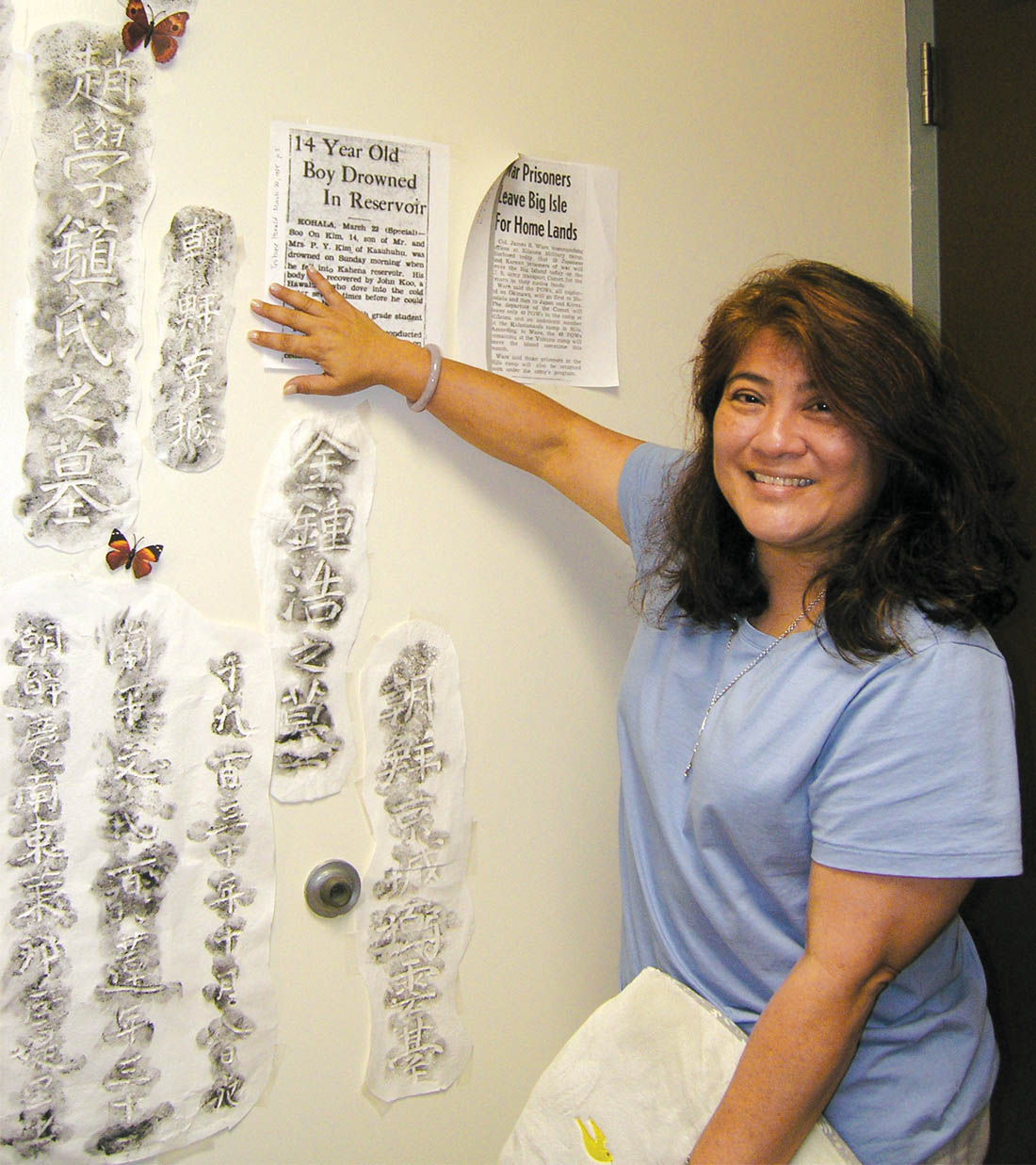
Journey from the Land of Hibiscus to Hawai‘i Island
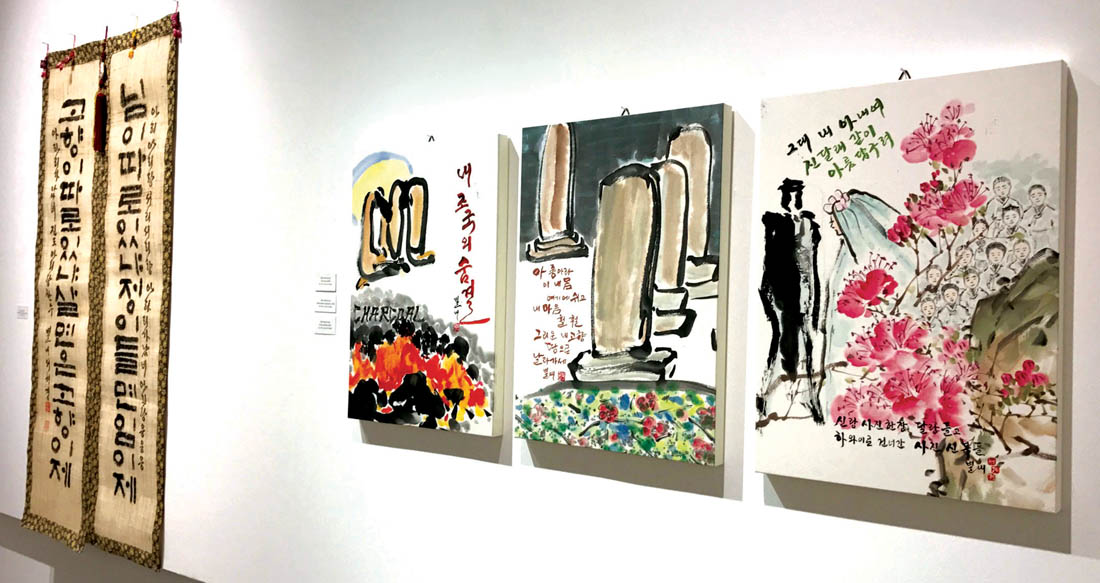
By Jan Wizinowich
Although not native to Korea, the hibiscus has long been its national symbol. Probably originating in India, the hibiscus is easily transplanted, and endowed with adaptability. It most likely made its way north through China into Korea, where it was adopted as an emblem of the Joseon dynasty (1392–1910), and as the national symbol of the Republic of Korea (1948). It has long been a symbol for the endurance and prosperity of the Korean people. Perhaps the attributes of the hibiscus were carried in the hearts of Korean immigrants who arrived in Hawai‘i, a native home of hibiscus.
Between 1903 and 1905, when the first officially sanctioned Korean immigrants arrived in Hawai‘i, their homeland was in flux—a pawn in global political events and heading towards Japanese occupation in 1910. They approached their new situation with hard work and the hopes of the restoration of the land of hibiscus.
Koreans make up one of the smallest immigrant groups on Hawai‘i Island, and much of their lives and accomplishments live in shadow. University of Hawai‘i at Hilo English professor Seri Luangphinith, author of The Paths We Cross: The Lives and Legacies of Koreans on the Big Island, is setting out to change that. What started out as a catalogue for a 2017 Korean art exhibition became a book that captures an array of the history, culture, and experiences of Koreans on Hawai‘i Island.
The project emerged out of a request from the university’s students to add Korean studies to the humanities curriculum. Seri began to study Korean with Korean language teacher Hanna Kim, who introduced her to the unique work of Korean artists. Two of those artists, Hae Kyung Seo and Byoung Yong Lee, were featured in a 2017 Korean art exhibit at the East Hawai‘i Cultural Center.
Hae Kyung Seo began developing her unique style of calligraphy from the age of seven. Through many years of exploring various forms, her art is now a combination of calligraphy, poetry, and ink-wash paintings to depict Korean history, among the first in Hawai‘i.*
After earning a degree of fine arts from Hongik University in Seoul, Byoung Yong Lee left to study at the Pratt Institute in New York City. In 1994 he moved to Hawai‘i Island where he engaged in community activism, notably the restoration of the Korean immigrant graves at ‘Alae cemetery in Hilo. Byoung Yong Lee’s more contemporary expressionistic artwork provided a contrast with the more traditional art of Hae Kyung Seo, but also created a synergy of cultural roots.*

Lives Well Lived
When Seri began interviewing people, the project grew exponentially. “Every interview yielded two or three more people to contact,” said Seri. As well as the interviews, Seri scoured scholarly articles, books, local community publications, newspaper clippings, oral histories, archives of Lyman Museum, the Plantation Museum, and the main Hawai‘i State Archives, unearthing the rich tapestry of Korean lives.
Probably the most well-known Korean immigrant was Syngman Rhee, prominent Korean national and eventual first president of the Republic of Korea. During his time in Hawai‘i, he worked tirelessly to improve the lives of Korean immigrants through education and enterprise, while helping to organize the Korean independence movement in Hawai‘i. Rhee created the Korean Christian Institute, a coeducational boarding school on O‘ahu, which provided opportunities for the children of plantation workers to improve their lives through education.
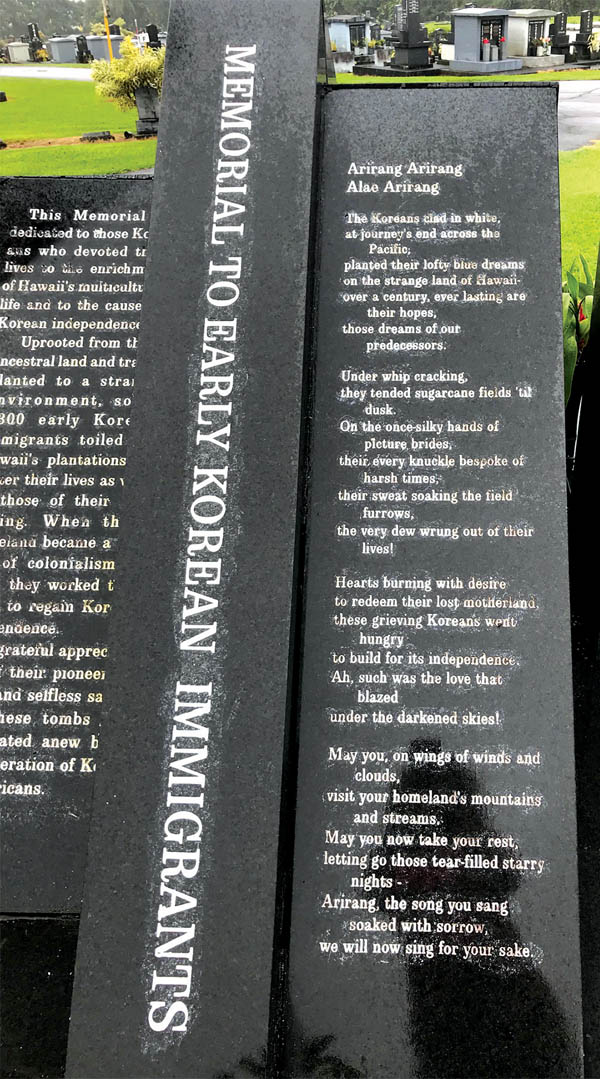
On Hawai‘i Island, Rhee helped to start Donjihoe Investment Company and Dongji Chon (Comrade Village) just south of ‘Ōla‘a (Kea‘au area) where they harvested lumber, made charcoal, and farmed. “The charcoal factory was just one of several unassuming businesses run by Korean nationalists in the 1920s,” said Seri.
In the late 1940s, with funds from the closure and sale of Korean Christian Institute and funds from the Dongji Investment Company, Inha Technical College in Incheon was opened. Highly rated, it continues to provide education for Koreans and Korean Americans, specializing in engineering and physical sciences.
The original 7,000+ Koreans in Hawai‘i began a legacy of hard work and innovation. Soon Koreans began leaving the plantations to begin businesses in Hilo. There was a Korean drugstore on Front Street (now Kamehameha Avenue) owned by Park Bong Soong, a shoe store owned by Parls Nails Hun on Volcano Street, and a hotel owned by Choy Hung Choon on Front and Richardson.*
Husbands of many picture brides tended to be older and so the women often outlived the men, and became the backbone of the community. Over the course of her life, Harry Kim’s mother, Ya Mul Kim, undertook a poultry business, a lauhala weaving venture, and started the beloved Kea‘au Kimchee Factory.*
Working in the ginger fields until 2003, Yeon Boon Kang and her husband Shin Mook Kang went on to start businesses of their own. Yeon started H and K Lunch Shop and Shin created an organic piggery based on waste management techniques developed in Korea.*
Overcoming many obstacles, Moon Soo Park earned a medical degree as a pathologist and went on to found Clinical Laboratories of Hawai‘i. Just before he retired, while on medical missions in Southeast Asia, he encountered the natural farming techniques of Master Han Kyu Cho and hosted several workshops, enabling Hawai‘i Island farmers to develop sustainable agriculture, which became known as Korean Natural Farming.*
Another well-known Korean son is Judge Ronald Ibarra. His Korean mother, Young Hi Lee, was born at Kehena Ranch, where her father worked planting corn. When Ronald was young, the family moved to a coffee farm in Captain Cook. After much hard work and two law degrees, he became the first administrative judge of Korean descent to be appointed on Hawai‘i Island.*
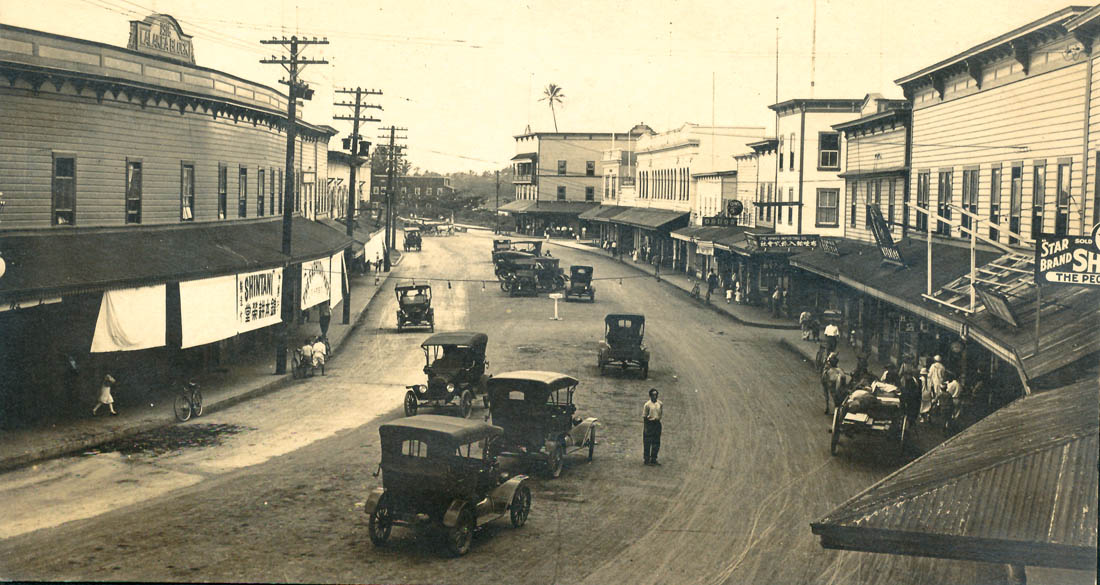
Look to the Ancestors
Amidst doing oral history interviews, Seri began digging through old newspapers and public records of Koreans in the Lyman Museum archives. “Then, on a hunch, I started looking at Korean cemeteries because I knew that Japanese and Chinese immigrants recorded hometowns and families on their graves and sure enough the Koreans also did the same thing.”
The ‘Alae cemetery slopes down to the highway just north of Hilo town. In the center is the perfect canopy of an African shower tree. Just behind the tree is a large obelisk engraved with the Hawaiian version of Arirang, a Korean national song. The obelisk, created by Byoung Yong Lee, commemorates the lives of the Koreans who came to the island before him and marks the Korean section of the graveyard.
The grave markers of this and other island cemeteries, many abandoned, provided Seri with clues that contributed to the picture of the lives of the Korean immigrants. The gravestones list parents, spouses, siblings, children, hanai (adopted) relationships, and close friendships, as well as village of origin, social standing, and political stance. Additional insights were gained by searching out the origins of the use of a particular style of Chinese characters as well as Giwon, a traditional method of recording time derived from the legend of Dangun.
The photo of the gravestone of the Chueng family sparked an unexpected connection with a descendent of a Korean immigrant family. On New Year’s Eve 2021, Seri got a surprise email from Gary Chong, who had found his grandfather’s gravestone in the book. Seri had learned of the graveyard located in an abandoned coffee field in Hōlualoa through the Reverend Gyo Mun Kim of the Korean Methodist Church in Kona, whose book first documented some of the graves.
Stories Continuing to Unfold
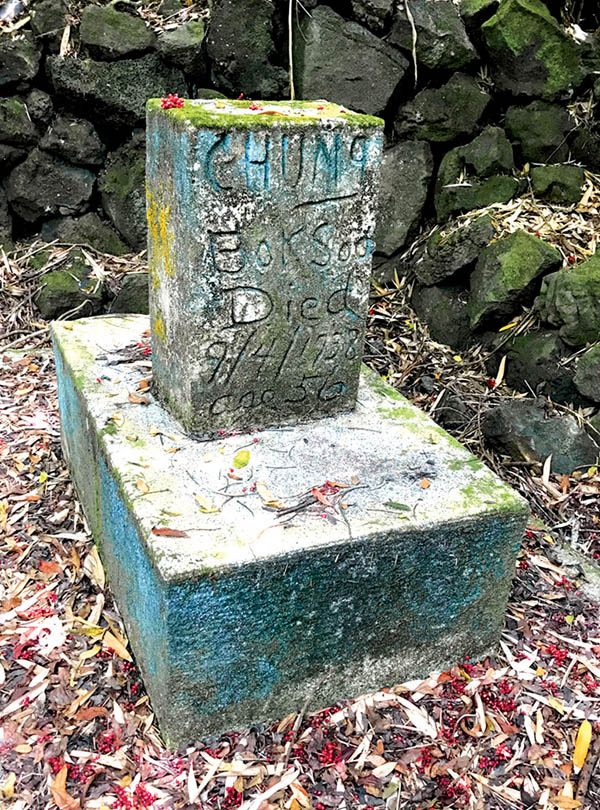
A chapter of The Paths We Cross: The Lives and Legacies of Koreans on the Big Island relates the journey Seri and her fiancé took to Korea to search out the ancestral graves and villages recorded on gravestones of the Hawai‘i Island cemeteries. This is a story that is just beginning to unfold.
Since the 2017 publication of the book, Seri has continued to research for the next volume, which she hopes to have published in 2025. A cornerstone of much of Seri’s investigation has been following the stories told by the gravestones of Korean immigrants, found in several grave sites around the island and this and other emerging information is evolving into the next volume of Hawai‘i’s Korean story.
“Researching graves in particular gave us a glimpse into the past to a time when Korea was still a unified peninsula known as Joseon, when Jeju Island was once still part of Jeolla Province and when Seoul was called Gyeongseong—these became a starting point in our later quest to track down and photograph more than two dozen hometowns of the first generations of immigrants as recorded on their headstones,” said Seri.
For Seri, as a daughter of Japanese and Chinese immigrants, these projects are a heart quest. “That’s why the stories of Koreans resounded with me—they remind me of what my father’s countrymen suffered. I empathize with Korean history and have learned what occupation and war can do to a people and culture. When a country unravels like that, the traumas are lingering. There are stories I will never be able to tell, what people had to do to survive.” ❖
For more information: seri@hawaii.edu
References:
* The Paths We Cross: The Lives and Legacies of the Koreans on the Big Island
Excerpt from The Land of Hibiscus: Koreans in Hawai‘i
